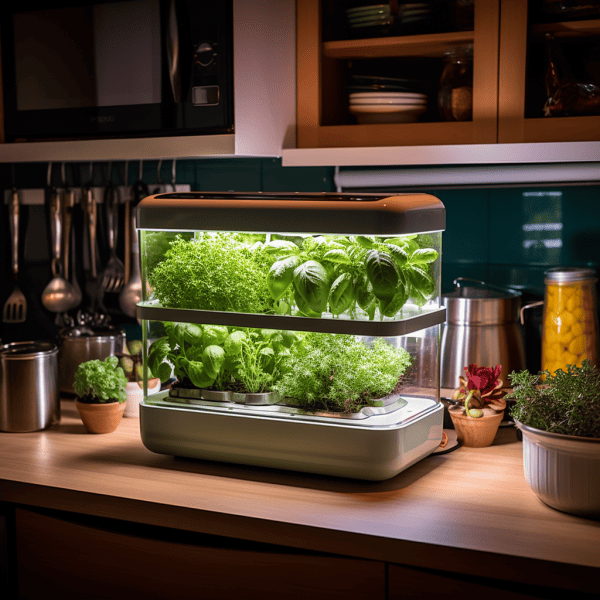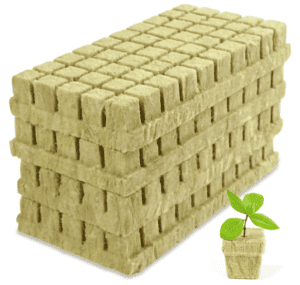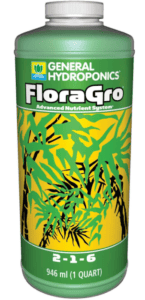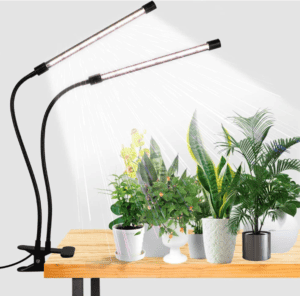According to gardening expert Amelia, “To use a hydroponic grow box, start by preparing your nutrient solution.”
What secrets lie within this self-contained indoor garden?
Like Pandora unleashing forbidden powers, opening the lid invites you into an ingenious world where plants thrive without soil.
This guide will illuminate the mysteries of hydroponics and empower you to harvest bountiful crops from your own technological marvel.
KEY TAKEAWAY
How to use a hydroponic grow box?
To use a hydroponic grow box effectively, assemble the necessary components, plant seeds or seedlings, monitor nutrient levels and environmental conditions, and harvest your crops when ready.
How to Build a Hydroponic Grow Box Tent
Building your own hydroponic grow box tent is a cost-effective way to start growing indoors. (1)
By following these steps, you’ll have a controlled mini greenhouse ideal for growing plants without soil:
Assembling the Components
- Purchase a grow tent, reflective mylar or linen, ducting, and adjustable hangers. I used a 24″x24″x48″ tent that provides just over 1.5 square feet of grow space.
- Attach the reflective material to the interior tent walls to maximize light reflection. This creates the illusion of more sunlight for the plants.
- Install ducting and secure hangers to the tent ceiling. They will be used to support your growing system and hang your LED grow lights.
Positioning the Grow Box
- Set up the tent in an out-of-sight area with access to electrical outlets, such as a closet or basement. Growing areas should stay between 70°-80°F for optimal conditions.
- Ensure stability by anchoring the tent securely to the floor or wall. This prevents it from tipping over, especially when heavy systems are installed inside.
Ensuring Proper Ventilation and Lighting
- Duct an extractor fan to one tent wall to remove hot air and keep good airflow. Additionally duct fresh air into the grow space.
- Install your LED grow lights, hanging them high initially and adjusting as plants grow. An 18/6 or 20/4 light cycle works well for most hydroponic plants.
Carefully follow these steps and you’ll be ready to start your hydroponic grow box system!
Experiment with DWC, NFT or other fun methods. Soon you’ll have a thriving self-contained indoor garden.
Choosing The Right Type Of Hydroponic Grow Box
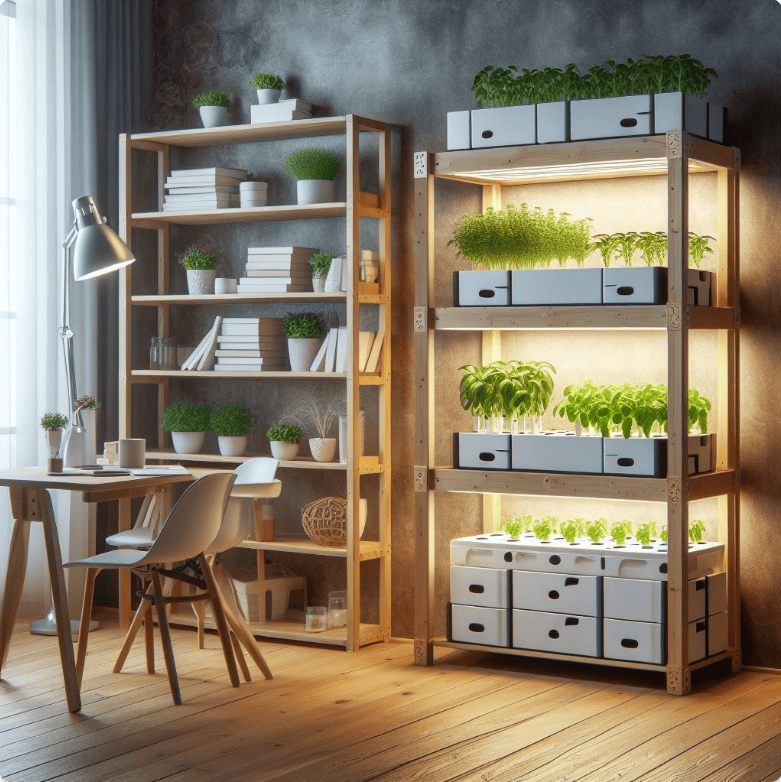
When starting out with hydroponics, one of the first big decisions is picking the right type of hydroponic grow box for your needs. (2)
There are lots of options on the market, so it’s important to consider what works best for the amount of space you have, the type of plants you want to grow, and your budget.
Here are some pros and cons of popular grow box choices to help you decide:
- Bucket Systems – These basic systems use buckets as the grow containers. They’re very affordable and easy to set up. Just punch drainage holes in the buckets and you’ve got yourself a grow box! However, they don’t provide much growing space and aren’t as stealthy as some other options.
- Ebb and Flow Tables – These systems have a basin that floods with nutrient solution on a timer then recedes. Plants sit in holes in the elevated table surface. They offer more growing area than buckets and are simple to operate. The downside is they can be messy if the basin overflows.
- Aeroponics Towers – These vertically oriented towers spray nutrient mist onto the plant roots. They produce big harvests in a small space but maintenance is more involved than other types. Expect to spend more up front.
- Tent Systems – Grow tents provide fully controllable mini greenhouses for your plants. They’re stealthy, modular, and allow easy access for Light-Light maintenance. Tents offer optimal conditions for growth but cost more than DIY bucket setups.
Start small until you get experience if you’re new to hydroponics.
Consider the Deep Water Culture technique – it’s simple and plants love just sitting with their roots in nutrient solution.
No matter the type, include a reliable grow light, ventilation, and pH-adjusting nutrients for best results.
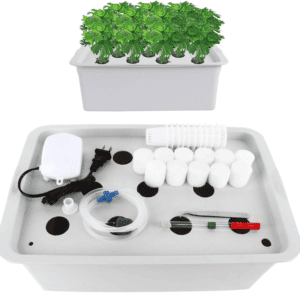
Essential Components of a Hydroponic Grow Box
There are several key components needed to set up a successful hydroponic grow box system. Each part works together to deliver oxygen, nutrients, and lighting so your plants can thrive indoors all year round.
- Container or Reservoir – Acts as the base to hold nutrient solution. Wide mouths allow easy access. Plastic storage bins or dedicated reservoirs work well.
- Growing Medium – Hydroton clay pellets or expanded rock wool cubes provide structure for root growth while allowing nutrient circulation. Net pots suspend the roots in solution.
- Nutrient Solution – A balanced formula supplies macro and micronutrients plants need. Adjustable pH and EC meters help maintain optimal solution levels for plant absorption.
- Lighting System – LED grow lights match the sun’s spectrum and provide the necessary lumens for vegetation and flowering. They generate less heat buildup than other options.
- Ventilation System – Inline duct fans suck hot air out through carbon filters, keeping temperatures comfortable. Additional fans circulate fresh air inside the grow tent or box.
- Water Pump and Tubing – Pumps oxygenate the solution and circulate nutrients when used with an ebb and flow or drip system. Tubing directs the flow where needed.
With the right components in your hydroponic system, you’ll be able to cultivate a successful indoor garden and harvest plants all year long!
The Benefits and Drawbacks of Hydroponic Grow Boxes
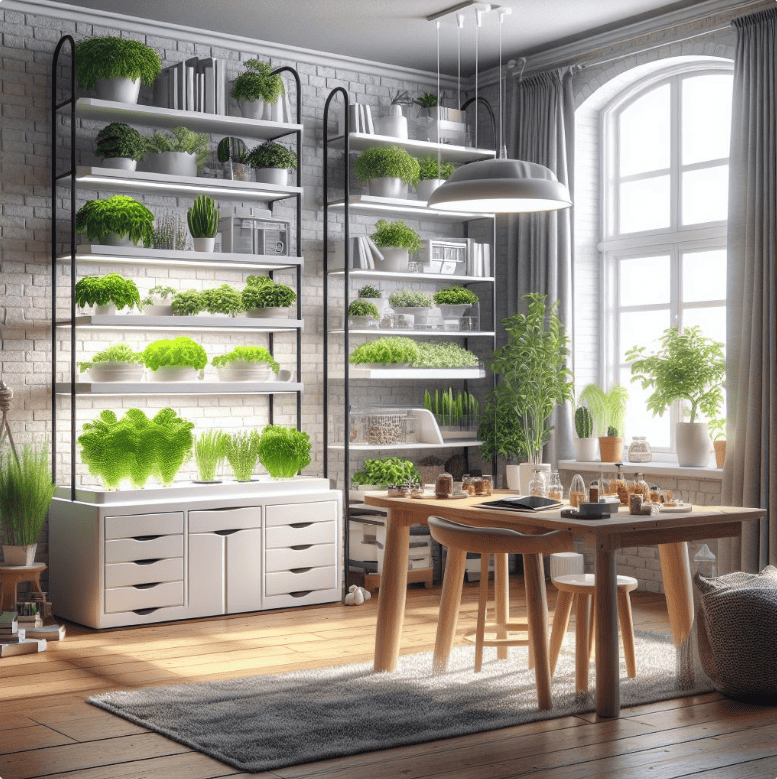
Whether used indoors or outdoors, hydroponic grow boxes provide many advantages over traditional soil gardening.
Yet they also come with some potential downsides to consider.
- Higher Yields – With optimal lighting, nutrient levels, and growing conditions, hydroponic systems allow for more bountiful harvests. Growers can crop multiple seasons annually.
- Faster Growth – Roots have direct access to nutrient-rich solution and oxygen. Plants grow rapidly, cuttingweeks off the timeline from seed to harvest.
- Lower Space Needs – Grow boxes optimize vertical growing space. More plants produce higher yields from a smaller footprint than soil methods. Great for small balconies and indoor areas.
- Precise Feeding – Nutrient solution pH and strength can be tailored exactly to plant needs at each stage. This prevents deficiencies and ensures maximized potential.
- Ease of Use – No heavy lifting of soil or worry about pest and disease issues. Systems like deep water culture are simple to operate for casual farmers.
- Higher costs – Initial investment in equipment like lights, reservoirs, and pumps is more than a simple soil garden. Ongoing nutrient costs also add up over time.
- More Fragile – Systems rely on consistent water and power. Equipment failures could cause loss of entire crops within days due to oxygen/circulation issues.
For most applications, the benefits of optimizing plant health and maximizing harvests outweigh potential downsides.
With some preparation, hydroponic grow boxes unlock gardening’s potential.
Planting and Maintenance
Success with hydroponics comes down to properly caring for your plants every step of the GROW.
Here are some tips:
- Choosing Plants – Leafy greens like lettuce are BEGINNER-FRIENDLY. Avoid plants with BIG root balls or complex nutrient needs. Consider tomatoes, peppers, herbs for their HIGH YIELDS.
- Planting – Use sterile GROWING MEDIUM and seeds or clones free of pests/diseases. For NFT or DWC, suspend the roots in solution. Top feed systems like KRATKY require only water up to the seed point.
- Nutrient Balance – Monitor pH, ELECTRICAL CONDUCTIVITY, and PPM levels DAILY to avoid deficiencies. Make small adjustments as plants MATURE. Automated systems take the guesswork out but hand watering is simple too.
- Pruning and Training – Maintenance ensures maximum LIGHT penetration and airflow. Prune off lower foliage, suckers, and extra stems as needed. Trellis vines for support.
- Pest and Disease Control – Catching issues EARLY is key with hydro. Isolate infected plants, carefully inspect new additions, and use biological controls when possible over harsh chemicals.
With a little TLC, your hydroponic INDOOR GARDEN will reward you with fresh, NUTRITIOUS harvests all year long!
With practice, hydroponics grows plants as easily as watering a flower pot.
Maximizing Yield and Harvesting
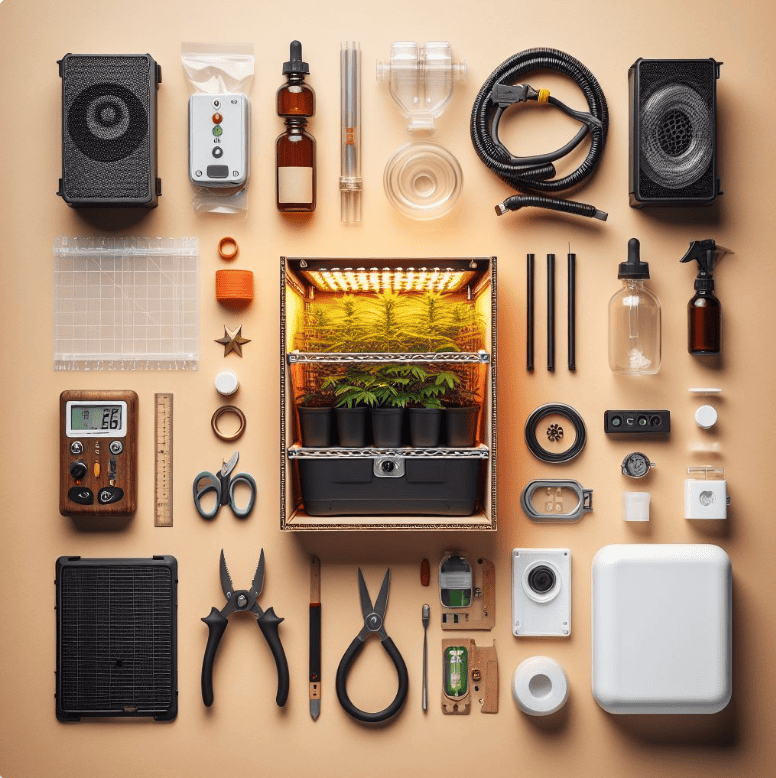
With some tweaks to your growing environment and process, hydroponic yields can be optimized. Proper timing takes crops from seedlings to a bountiful harvest:
- Growing Conditions – Monitor temperature, humidity, light and ensure adequate air exchange. Most GREENS thrive between 65-75°F under LEDs delivering 3000-4000 lumens per square foot over a 18/6 light cycle.
- Nutrient Tweaks – In bloom phase, increasing phosphorus and potassium coaxes bigger tomatoes, peppers and buds. Raising carbon dioxide levels 5-10x outdoor helps CROPS grow faster.
- Maturation Signals – Fruits change color and leaves yellow as harvest signals. Leaf droop also indicates watermelons and gourds are ready. Herbs are snipped just before flowering.
- Harvesting – Use pruners for delicate herbs, tomatoes or greens. Cut peppers and melons from their stems. Handle gently to safeguard nutrients.
- Post-Harvest – Rinse produce, trim leaves and pack cleanly to minimize bruising. Store at proper temps and humidity to prolong freshness before eating your rewards!
Troubleshooting Common Issues
No system is perfect so issues WILL ARISE. With experience comes the skill to diagnose and fix problems like:
- Algae – Too much light or nutrients spur its growth. Reduce intensity, fix leaks, wipe it out and address causes.
- Deficiencies – Yellowing indicates needing nitrogen, while spots signify pests or lack of magnesium. Correct pH first if the solution is off.
- Pests – Thrips and aphids invade. Isolate new plants and use non-chemical sprays as preventative maintenance.
- Diseases – Remove infected parts to stop spread of fungus gnats, damping off or root rot due to soggy MEDIA or stale air. Improve ventilation and temperature controls.
Don’t panic! With observation and quick remedy, most problems can be set straight to keep healthy plants.
Hydroponics takes practice but is oh so rewarding!

Frequently Asked Questions
What is a hydroponic grow box?
A hydroponic grow box is a simple hydroponic system that allows people to grow plants like tomatoes, peppers, and lettuce indoors without soil.
It uses water and nutrients to grow plants hydroponically in a contained box or cabinet.
What are some advantages of using a hydroponic grow box?
Some key advantages of using a hydroponic grow box include being able to grow plants all year round, conserving water and space compared to soil gardens, and avoiding pests, weeds, and diseases that plague outdoor gardens.
Hydroponic growing also lets commercial growers and DIYers get bigger plant growth and yields.
Can I use a stealth grow box for growing indoors?
Yes, a stealth grow box is a type of hydroponic grow box designed for indoor growing in a discreet way.
It uses LED grow lights and has features like carbon filters to allow people to grow plants without others knowing about the indoor grow room.
Stealth grow boxes are a popular option for those wanting to grow hydroponically indoors without others finding out.
What types of hydroponics systems can I use in a hydroponic grow box?
Some common hydroponics systems used in grow boxes include deep water culture hydroponic, nutrient film technique, and air pump powered systems.
Deep water culture uses an air pump to oxygenate the water reservoir that plant roots hang down into.
Nutrient film technique uses a pump to circulate a thin film of nutrient-rich water around the plant roots.
Growers can choose the best system based on the plants being grown and their preferences.
How often do I need to change the water and nutrients in my hydroponic grow box?
For most hydroponic systems, it’s recommended to change 25-33% of the nutrient solution in the water reservoir once a week.
This keeps the dissolved oxygen and nutrient levels optimal for plant growth.
Changing the water regularly is important to prevent build-up of harmful salts and maintain a clean environment for plant roots.
Commercial growers may change solutions more frequently.
What type of lights are best for an indoor hydroponic grow box?
LED grow lights are generally considered the best option for indoor hydroponic grow boxes due to their energy efficiency and effectiveness for plant growth.
LEDs come in various wavelengths tailored for different plant growth stages from seedling to flowering.
Use LED lights appropriate for the plants being grown to get the best results from a hydroponic garden.
How do I get started with hydroponic gardening?
The first step is setting up your hydroponic grow box with the hydroponics system you select, then adding the water and nutrient solution according to the manufacturer’s instructions.
Seedlings or transplant can then be placed and the grow lights adjusted based on the plants’ needs.
With regular attention to water levels, nutrients, and plant care, anyone can start growing plants hydroponically either as a simple home hobby or commercial operation.
Conclusion
After germinating the seeds and nurturing your plants through the vegetative and flowering stages, it’s time to reap the fruits of your labor.
As you harvest your first crop from the hydroponic grow box, reflect on the skills you’ve developed.
Through research and experimentation, you gained mastery over this CLOSED-LOOP GARDENING system.
While hydroponics requires diligent monitoring of pH, nutrients, and other parameters, THE REWARDS ARE BOUNTIFUL.
This sustainable technique PRODUCES HIGHER YIELDS in a smaller footprint than soil gardening.
You can savor FRESH PRODUCE year-round, even without a backyard or ample sunlight.
As a hydroponics pro, SHARE YOUR EXPERTISE with gardening newcomers.
Or try applying your skills to cultivate different plants, modulate lighting schedules, or EXPERIMENT WITH RECIPES using your homegrown herbs and veggies.
Like tending a futuristic farm, the possibilities in this field are endless.
Wherever your green thumb leads next, may YOUR HYDROPONIC JOURNEY continue to bear fruit!
References
- https://www.thespruce.com/beginners-guide-to-hydroponics-1939215
- https://dealzer.com/blog/the-ultimate-guide-to-choosing-the-right-grow-box-for-your-hydroponics-setup/
Related Articles
- https://tophydroponicgarden.com/what-to-plant-in-a-grow-box/
- https://tophydroponicgarden.com/hydroponics-for-beginners/
- https://tophydroponicgarden.com/category/grow-box/
Was this helpful?

I’m Barrie L., a passionate hydroponic gardening enthusiast dedicated to cultivating thriving, soil-less gardens. With a focus on all things hydroponic, I share my expertise on innovative growing techniques and sustainable practices through my blog, tophydroponicgarden.com. As a seasoned hydroponics specialist, my goal is to inspire and guide fellow gardeners in harnessing the power of water-based cultivation for bountiful and eco-friendly harvests. I’m also an author of the book “Hydroponics For Absolute Beginners: Your Step By Step Guide For How To Create An Hydroponics System At Home Without Soil, For Growing Vegetable, Fruit And Herbs.” which is sold on Amazon. Join me on a journey of redefining the way we cultivate plants, one nutrient-rich solution at a time. Happy growing!

